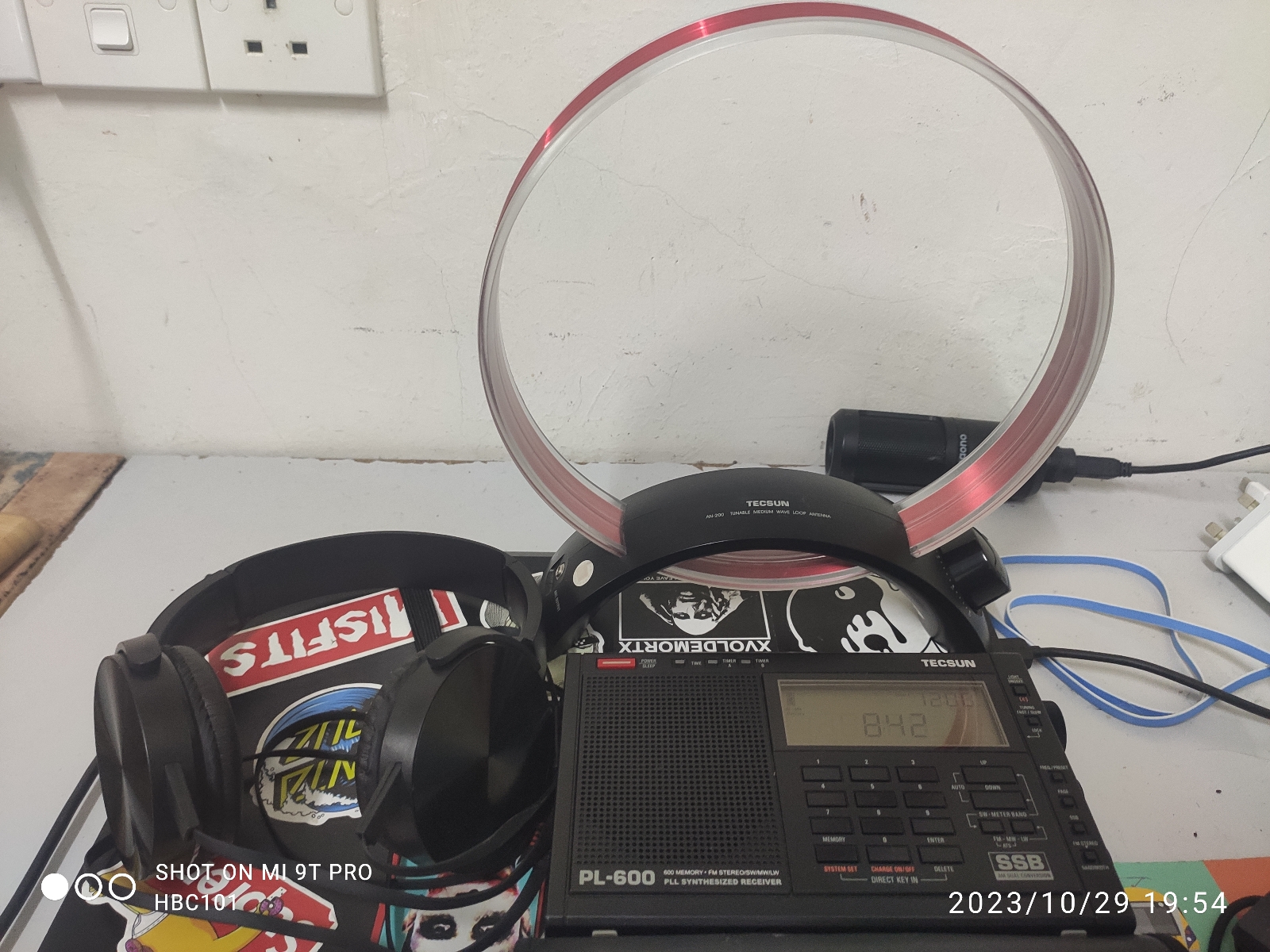WWVH in Kauai, Kekaha, Hawaii (USA) was logged on 6 June 2024, operating on the short-wave frequency of 10 MHz. At the same time, two other time signal stations; Italcable (JN53DV, Massarosa, Italy) and BPM (Shanqui, Lintong, China) station was also received on the same frequency and it can be heard under the strong WWVH signal. BPM can be identified by time pips and top-of-the-minute 1000 Hz tones that are similar to WWVH but with no time announcements while Italcable can be identified by the deployment of standard RAI time signal at the end of the minute, as generated by INRiM (Instituto Nazionale di Ricerca Metrologica, National Institute of Metrology Research) and broadcast intermittently on Italian radio and television stations. The minute is announced with six 1000 Hz pips, 0.1 seconds each, at the beginning of seconds 54 through 58, a pause, and then a seventh pip beginning on the minute. Immediately before the pips, during seconds 52 and 53 of each minute, the CET/CEST time of the following minute is transmitted in binary-coded decimal form.
Reception on 10 MHz was (SINPO) 54444 - the signal, which consists of time pips, a series of 500/600Hz test tones, time announcements by a female announcer followed by 1000 Hz beep at the top of the minute, were heard clearly with some static/fading and QRM interference from another adjacent time signal (RWM, Moscow, Russia) on 9996 kHz apart from co-channel interference by Italcable and BPM on the same frequency, from 1645-1652 UTC and 1656-1702 UTC. BPM ID (CW/vocal) was heard at 1659 UTC followed by WWVH ID at 1659 UTC and ItalCable ID (CW/vocal at 1700hrs). A440 tone was heard on WWVH at 1701 UTC.
Two audio files from this transmission can be observed here and here.
Reception report was emailed on WWVH on the same day. Reception report will be emailed to Italcable and BPM soon.
Receiver site: Gemas, Negeri Sembilan, Malaysia via Waitangi, Chatham Islands, New Zealand online KiwiSDR receiver.
Antenna: 20 - 10 Hexbeam. Beaming North West.
Email:
wwvh@boulder.nist.gov
wwvh@nist.gov


